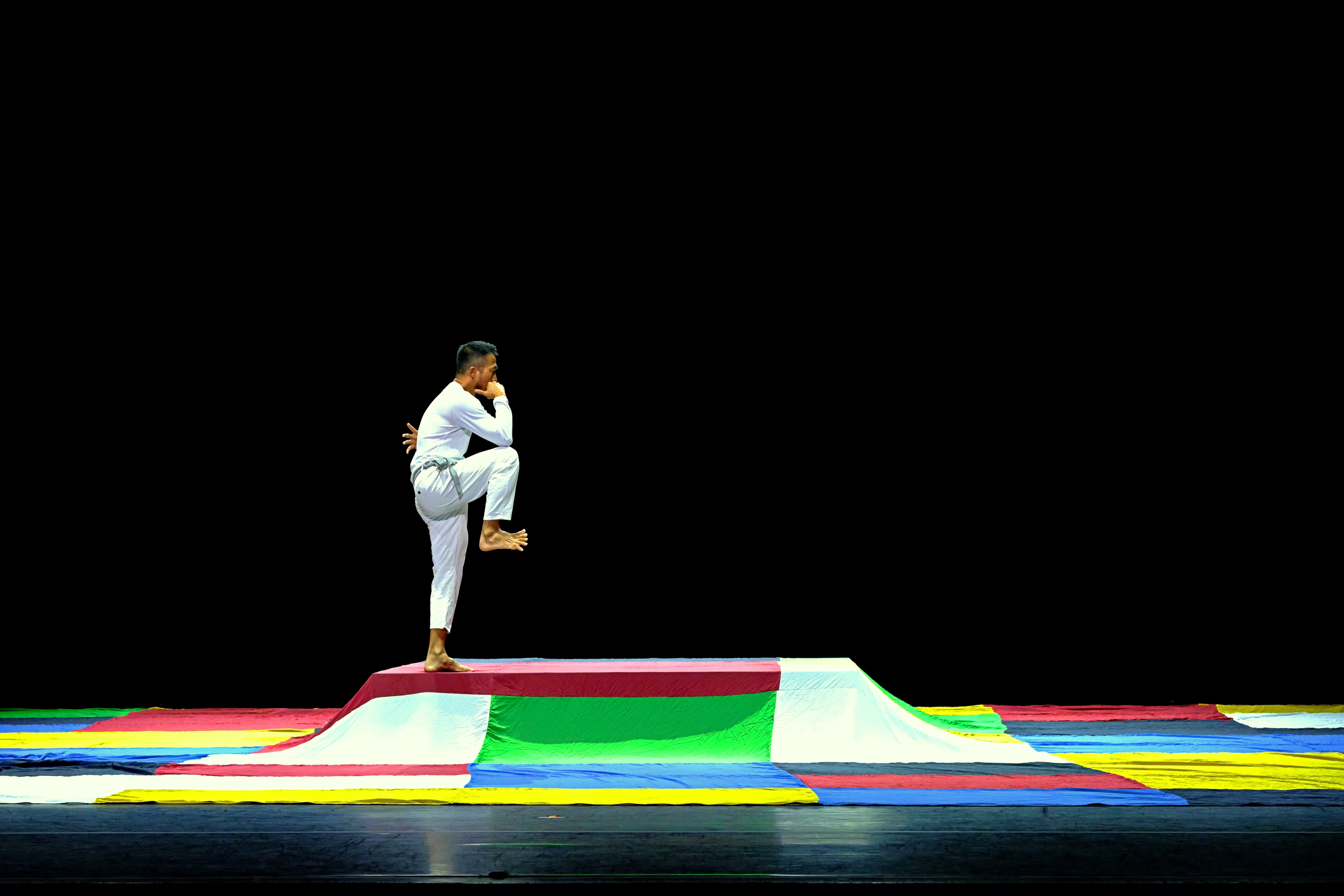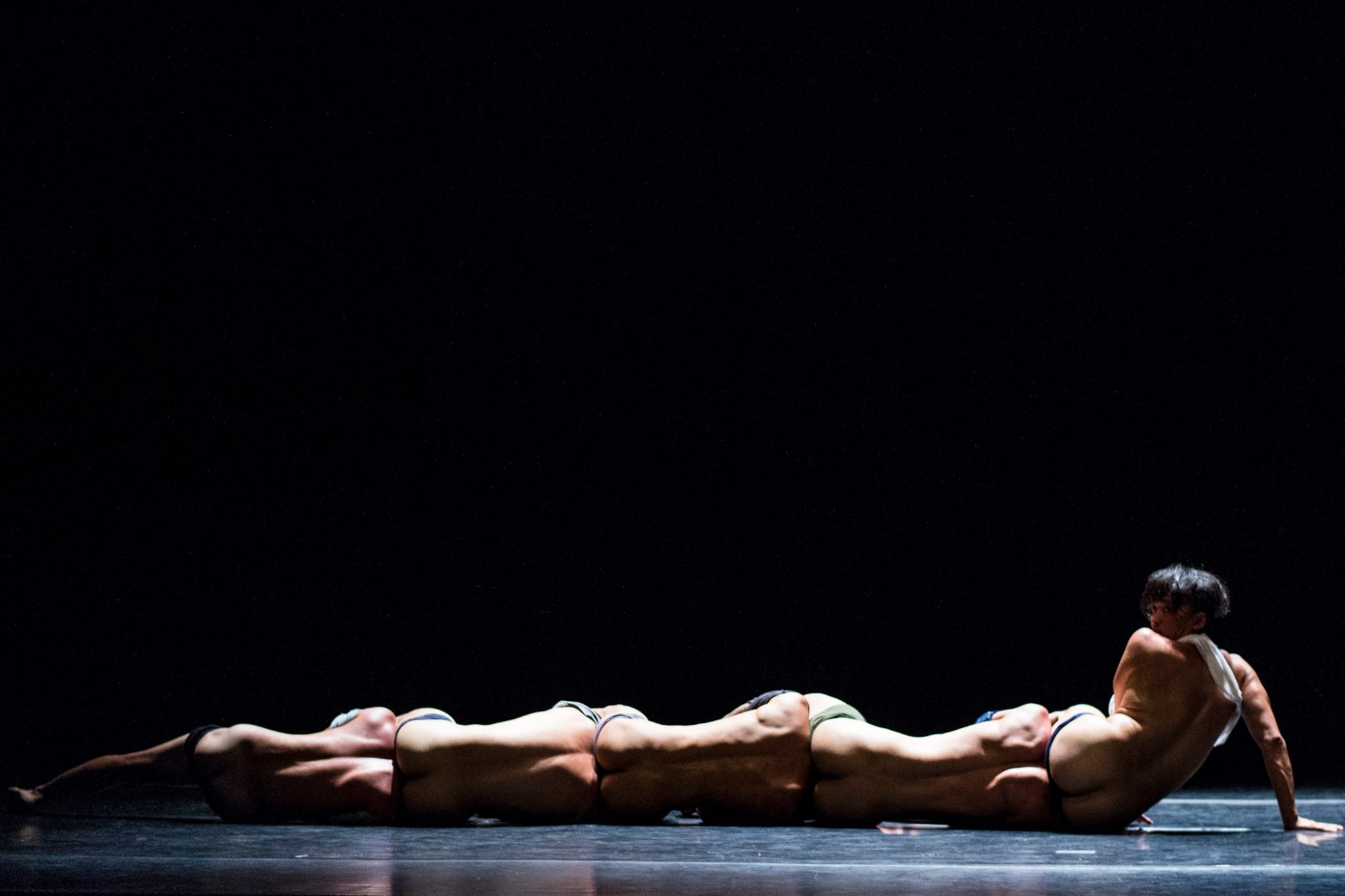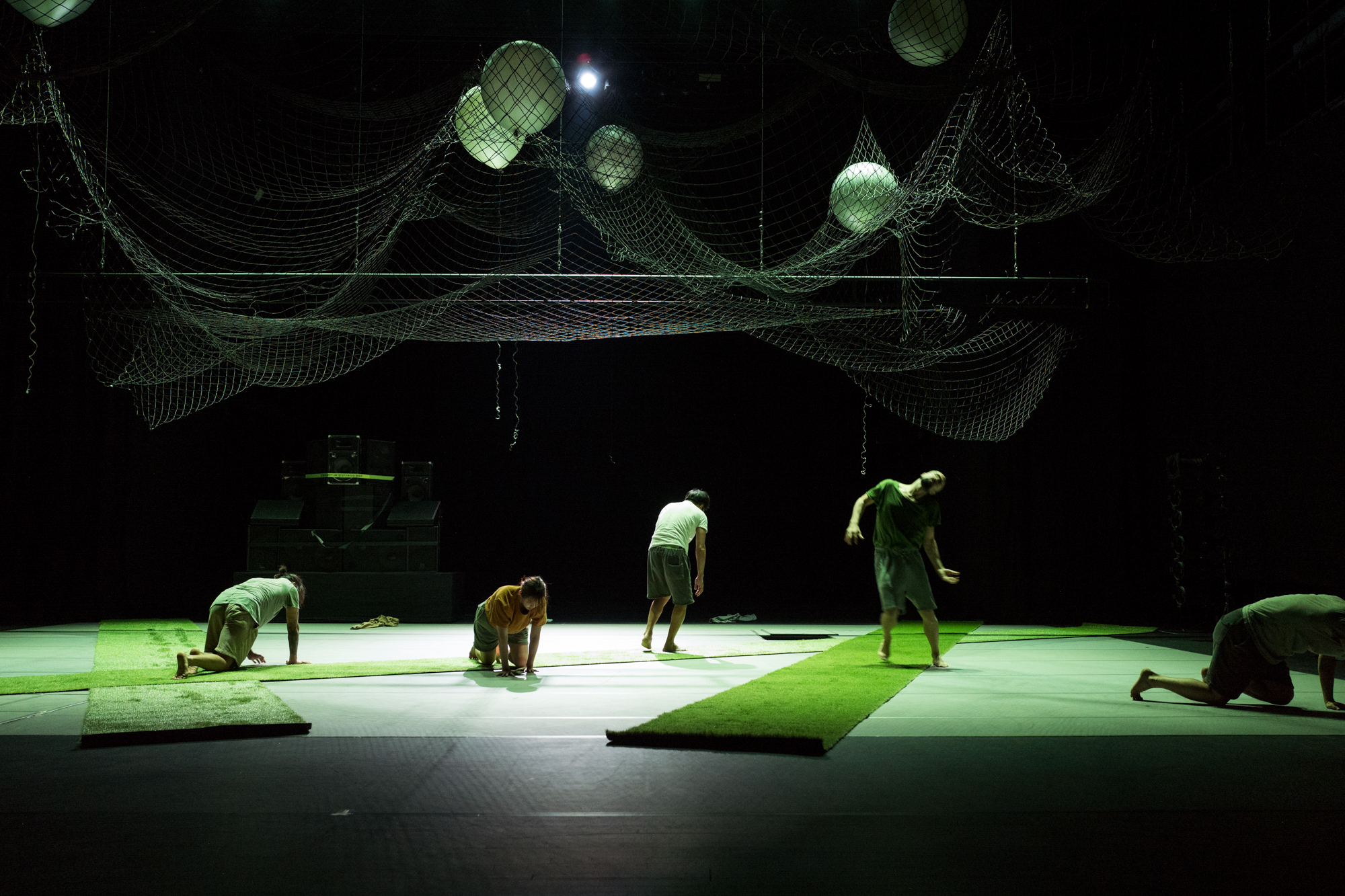Performance Info
Performance Info
About CompanyYe Hyo-Seung danced for the Belgian dance company Les Ballets C de la B with Alain Platel for many years before founding BluePoet D.T.in 2013. In addition to using his rapport with European stages to facilitate exchanges between Korea and Europe. Ye has reached out to the North American market, promoting the beauty and philosophy of Korean dance. The artist is currently under contrat with the French performance art planning and management company Mister Dante. Ye continues to present his unique body language, art and philosophy on annual European tours.
IntervieweeDirector Ye, Hyo Seung
Interview
Q: After majoring in dance in Korea, you received training in France and worked as a dancer in Europe. After returning to Korea, you began working as a choreographer as well as a dancer. Tell us about your background, and why you began to pursue work as a choreographer.
After working as a dancer in Tokyo between 2002 and 2003, I moved to Paris and danced with the Atelier de Paris Carolyn Carlson, then joined Alain Platel’s Les ballets C de la B in 2005. After six years in Belgium, I returned to Korea in 2011 and used my stage and cultural experiences in Europe to found BluePoet D.T. My first choreographic work “trace” follows my career path from my past (as a dancer in Europe), present (as a dancer and choreographer in Korea), and imagined future. It is from this work that I began to explore themes about body sensation.
Q: “N(own)ow,” a story about men talking about “what they ‘now’ ‘own’,” premiered in 2013. I vividly remember how the dance focused on the pure male body and awakened the senses through movement and sound. Please tell us more about the work.“N(own)ow” came into being when a few colleagues from Les ballets C de la B talked about creating a dance without the direction of Alain Platel. Five dancers from Portugal, Belgium, France, New Zealand, and Korea gathered to perform this work. The title reflects the desire of five men, all of different nationalities, who came to Seoul to show what they now possess (own). Since we’ve worked together for many years and understand one another’s body language so well, we were able to create a one-hour dance program in just one week. I believe that body language is a human prerogative. There is a purity that only the body can give. This dance does not use any objet; there are only five male bodies on stage wearing only t-shirts and underpants. It is ultimately a story about the male body. We performed “N(own)ow” in Europe many times and made a Korean version after it became part of our repertoire.
Q: “Opium” is a memorable work that shows how dance can awaken the body’s intrinsic senses, which would never have been experienced before since these same senses would have been repressed. All typical dance movements and techniques were eliminated and replaced with ordinary or abstract actions, and auditory and visual factors were actively incorporated to maximize the senses.“Opium” is a work that contains the various physical ideas that were discussed in all my works. If all my previous works were about the body, “Opium” explored the possibilities of physical expression by experimenting with how the body changes when physical sensations are brought to their extremes. I assumed the habitual gestures and actions in our lives are addictive body behaviors and observed them. When we are extremely drunk or drugged or want to get high, we embody another version of ourselves, another facet of our identity. Since I wanted to express that intoxicated state, this was both physically and mentally difficult. Of course, we can express the body in beautiful ways. But, here, I wanted to stretch my body to its maximum limits and portray dark and heavy scenes. Through this work, I realized both the infiniteness and limitedness of bodily expression.
Q: In your most recent work, “Declaration Companion,” you become a shaman and stage a 21st-century version of gut (shaman ritual). One critic commented, “Ye Hyo-seung, who becomes completely possessed by spirits, gives a bold, skillful, and madly intense performance in which the slightest tremulations express so much.” As a choreographer and dancer, what kind of story did you want to tell through this work?Beginning with “trace” in 2011, I created solo performances, such as “How to be happy,” “Chaos,” “Voice of acts,” and “Effects of Strangers.” I wanted to experiment with the extent to which I could convey a message using my body. The theme of “Declaration Companion” is coexistence, people living together in harmony. There is a live music accompaniment that uses electronic music, contrabass, and percussion players. In a gut ritual, the apjeon-geori summons the spirits and is characterized by vibrant music and colors, while the dwit-jeon-geori placates the spirits and then sends them off. Just as a shaman connects heaven and earth, I too become a shaman possessed by spirits, and by connecting the apjeon-geori and dwit-jeon-geori, I tell a story about shamans and the cyclical nature of the universe.
Q: Since a dance piece is brought to completion by the dancer, the role of the dancer is just as important as that of the choreographer. You excel as both a dancer and a choreographer: What does this dual position mean to you?“I’M SO TIRED” is the only work in which I exclusively worked as the choreographer. In all other works, I was both dancer and choreographer. Ultimately, that is my identity. The unreal world of the stage is the place where I feel most alive. Most people think of me as a dancer, since that role has occupied a great portion of my career so far. Consistently performing new dance pieces is an important part of expressing my identity. However, the time has come for me to slowly step back from my role as a dancer and live as a choreographer and art director. Thirty years of telling stories with my body have taken their toll. To survive in a different identity, I must focus.
Q: In all the works you mentioned, the physical body takes the choreography’s central focus.My strength and “weapon” are in using the body in its infinite expressive styles. During moments when one becomes speechless, they say the body takes over to communicate. Although verbal language is the primary mode of communication, the body can overtake that function. I have a firm belief that a dance performance must be able to convey a message purely through the body’s movements. I know that performance arts are in fashion, but I think the time will come when a dance show can stand on its own, focusing solely on the body’s movements. Fusing genres and collaborative works both lead to meaningful results, but I personally want to create dance performances that communicate with the audience solely through the body.
Q: What are your plans and what kind of questions do you have as a choreographer and dancer?I am currently interested in the body language of ordinary people, as opposed to professional dancers. I recently participated in an EBS Docu-Prime documentary titled “Dance: It’s the Wind” as a choreographer and artistic director. The “dancers” I choreographed were subway workers whose average age was 63. It was very meaningful to me and I continue to do this kind of work. I participated in this project with ordinary people because I firmly believe that all human bodies, even those not formally trained in dance, can express emotions and convey messages. In the age of the COVID-19 lockdown, as we live within enclosed invisible boundaries, now is the time to use our bodies to express ourselves and escape from the tediousness of daily life.
Production Details
Major Productions〈OPIUM〉
〈N(own)ow〉
〈trace〉
〈Declaration Companion〉
〈I’M SO TIRED〉
〈VOICE OF ACTS〉
〈Chaos〉
〈How to be happy〉
〈Effects of Strangers〉
〈Dance, It’s the Wind〉
- 2017 Kinesis Dance Somatheatro, Canada
- 2017 30/30 Les Rencontres de la Forme Court Festival, France
- 2016 ROMP Dance Festival, Canada
- 2015 Bienel INTERNACIONAI de danca do Ceara Festival, Brazil
- 2015 CENA CUMPLI CIDADES FESTIVAL, Argentine
- 2015 Hong Kong Art Festival, Hong Kong
- 2014 Bruuge December Festival, Belgium
- 2014 Paris Quartièr d’été, France
www.bluepoetseoul.com
BluePoetDanceTheatre
bluepoet__
Production Details
- Director
Ye, Hyo Seung
Ye Hyo Seung danced for the Belgian dance company Les Ballets C de la B for many years before founding BluePoet D.T. in 2013. In addition to using his rapport with European stages to facilitate exchanges between Korea and Europe, Ye has reached out to the North American market, promoting the beauty and philosophy of Korean dance. The artist is currently under contract with the French performance art planning and management company Mister Dante. Ye continues to present his unique body language, art and philosophy on annual European tours.
BluePoet D.T.’s staged performances began with “I’m So Tired,” which depicts the everyday lives of people who feel perpetually bored and tired. The dance’s direction blends elements of realism and fantasy. This piece received the Honor of Excellence at the 2013 Performing Arts Fostering Program, which is hosted by Arts Council Korea. Ye won the Choreography Award at the 23rd Changmu International Dance Festival for “I’m So Tired” (reworked in 2015) and “N(own)ow,” establishing his position as a promising artist.









.jpeg)



 PREV
PREV
 황수현_나는 그 사람이 느끼는 것을 생각한다 ⓒ이의록(0).jpg)
.jpeg)










